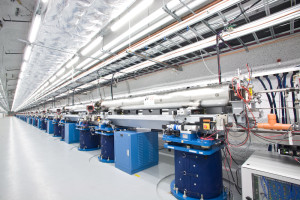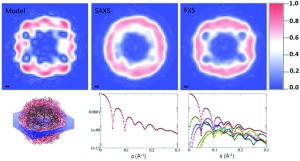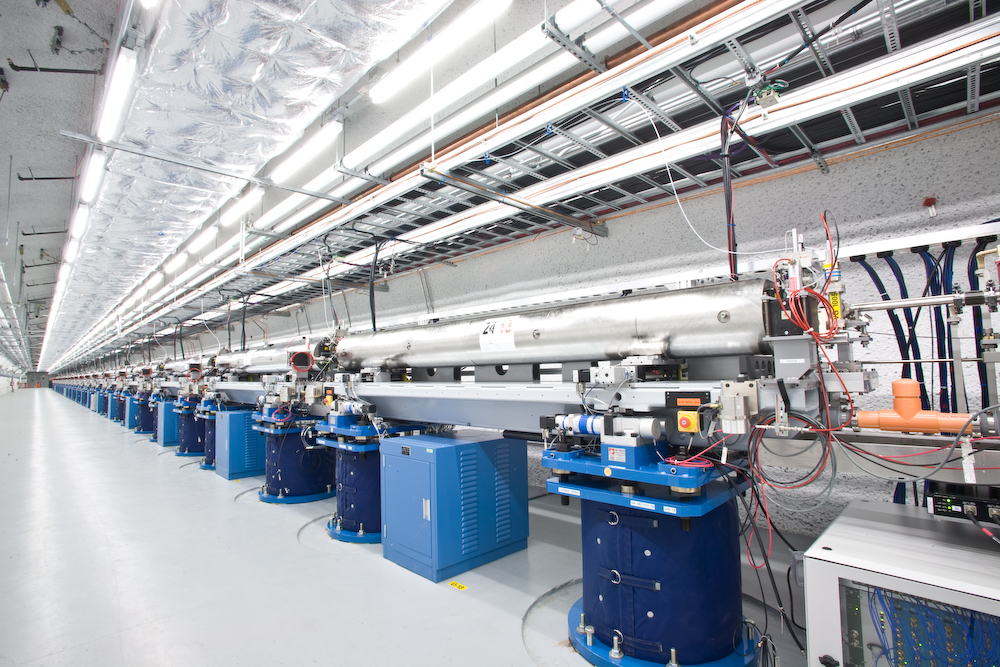 In biology, materials science, and the energy sciences, structural information provides important insights into the understanding of matter. The link between a structure and its properties can suggest new avenues for designed improvements of synthetic materials or provide new fundamental insights in biology and medicine at the molecular level.
In biology, materials science, and the energy sciences, structural information provides important insights into the understanding of matter. The link between a structure and its properties can suggest new avenues for designed improvements of synthetic materials or provide new fundamental insights in biology and medicine at the molecular level.
During standard X-ray solution scattering experiments, molecules scatter X-rays as they tumble around during exposures, resulting in a diffraction pattern with matching measurements along all angles due to the full orientational averaging. When X-ray snapshots are collected at timescales shorter than a few nanoseconds, such that molecules are virtually frozen in space and time during the scattering experiment, X-ray diffraction patterns are obtained that are no longer equal along all angles. These measurements are collected using a method called fluctuation X-ray scattering, typically performed on an X-ray free electron laser or on a ultra-bright synchrotron. This technique can provide fundamental understanding of biomacromolecular structure, engineered nanoparticles, or energy-related intermediate-scale materials not attainable via standard scattering methods.

Ab initio unconstrained shape reconstructions from model virus data. The reference density (left) shows significant detail in the core of the virus, which is largely absent when only SAXS data are used (middle) but which is reproduced when FXS data is used (top right). The top row images depict density slices through the center of the virus (bottom left). The graphs show the agreement between the data (black circles) and the simulated annealing expansion coefficients for SAXS (bottom middle) and fluctuation scattering (bottom right).
Recently, Physical Biosciences Division researchers Erik Malmerberg, Cheryl Kerfeld, and Peter Zwart published an article in IUCrJ offering an intuitive view of the nature of fluctuation X-ray scattering data and their properties. The scientists have shown that fluctuation scattering is a natural extension of traditional small-angle X-ray scattering and that a number of fundamental operational properties translate from small- and wide-angle X-ray scattering (SAXS and WAXS) into fluctuation scattering. In addition, they found that even with a fairly limited fluctuation scattering dataset, the amount of recoverable structural detail is greatly increased as compared to what can be obtained from standard SAXS/WAXS experiments.
”Although fluctuation scattering experiments are not standard or routine at the moment, this work enables us to assess the quality of experimental data and allows us to validate our experimental protocols and data reduction routines,” Zwart says. This will help mainstream this technique, which is gaining popularity as a result of two factors: high-quality structural models can be obtained from fluctuation scattering data and relevant X-ray sources increasingly are available. The PBD scientists expect that fluctuation scattering experiments will become routine in the future and intend that their foundational work will help researchers take full advantage of this technique.




